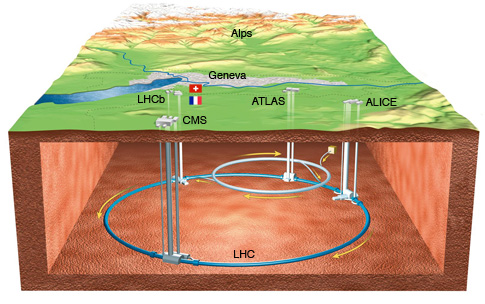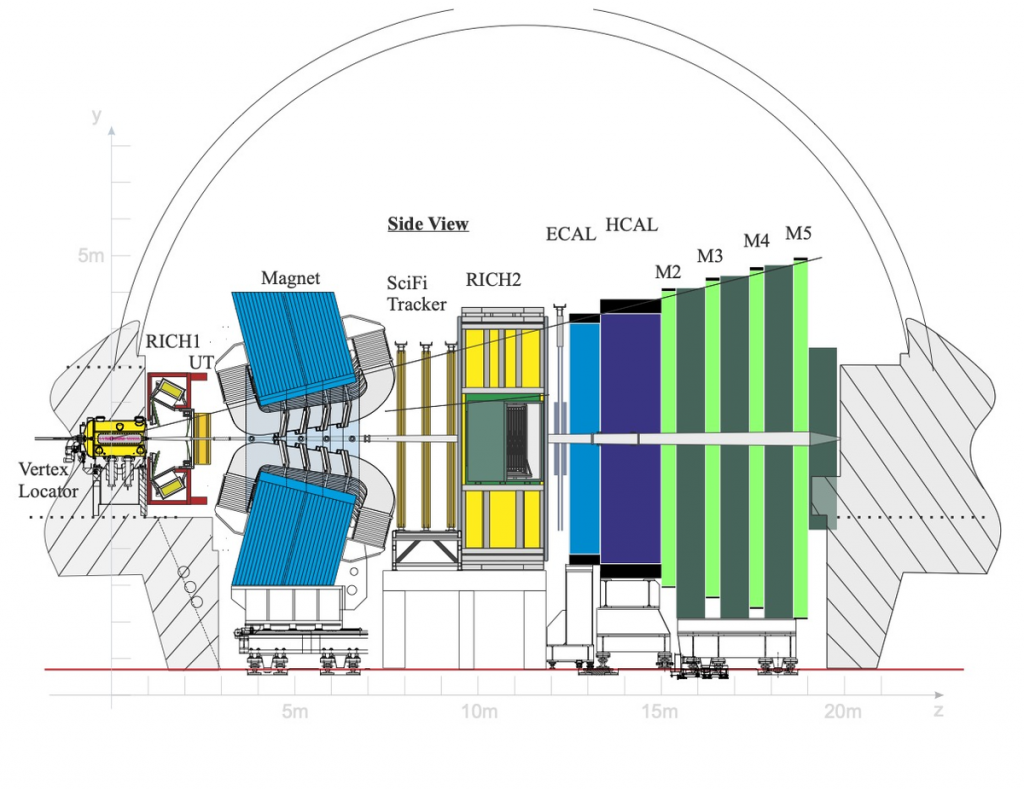The LHCb Detector
Where is it?
The LHCb detector is situated at one of the four experimental points around CERN’s Large Hadron Collider (LHC), where the two in opposite direction travelling beams of protons (or ions) are smashed together. In these collisions a large set of different particles is produced, that can be studied with the LHCb experiment. The experimental point of LHCb is the deepest point of the LHC tunnel at about 104m due to the slight tilt of the tunnel.

How does it work?
A particle physics detector can be understood like a high-speed camera, that can take a picture every about 25 nanoseconds. This enables to record every collision of the two LHC beams with the LHCb detector.
The aim of the LHCb experiment is to record the decay of particles containing b and c quarks, collectively known as ‘hadrons’. The experiment’s 4,500 tonne detector is specifically designed to filter out these particles and the products of their decay.
Rather than flying out in all directions, beauty and charm hadrons formed by the colliding proton beams (and the particles they decay into) stay close to the line of the beam pipe. This behaviour is called a forward boost and it is reflected in the design of the detector. Other LHC experiments surround the entire collision point with layers of sub-detectors, like an onion, but the LHCb detector stretches for 20 metres along the beam pipe, with its sub-detectors stacked behind each other like books on a shelf. This unique shape of the LHCb experiment is called a single forward-arm detector. The collision point of the beams is in the first sub-detector called Vertex Locator on the left of the following graphic.

Why is it called a spectrometer?
As it can be seen in the graphic above, the LHCb experiment has several sub-detectors, that are optimised to a slightly different purpose. As a result each one of the sub-detectors specialises in measuring a different characteristic of the particles produced by the collisions. Collectively, the detector’s components gather information about the identity, trajectory, momentum and energy of each particle generated, and can single out individual particles from the billions that spray out from the collision point.
LHCb is hereby able to precisely determine each particles identity, enabling to study the decays for each particle type individually. This is crucial for LHCb’s physics program and results in its description as spectrometer.
